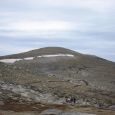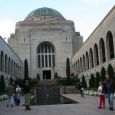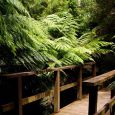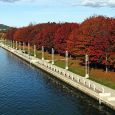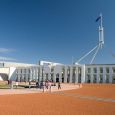Canberra
Advertisement
Canberra Airport
Canberra Airport does not receive international flights, but it has domestic flights from Sydney, Melbourne and several other cities. There is bus service operating every hour between the city centre and the airport. Canberra airport is 7km east of the CBD in Pialligo.
Canberra Trains
Canberra can be reached in a little over four hours by train from Sydney. From Melbourne, there are three different connecting routes, changing from train to bus at Cootamundra (Countrylink), Wodonga (V-Line) or Sale (V-Line). If you arrive by train from Sydney, you will be at the railway station some six kilometres from the city centre where buses connect to the city centre.
Canberra Buses
Canberra bus services from Sydney are operated by McCafferty's, Greyhound and Murray's. Average journey time is four hours. There are also services from Melbourne, Canberra, Wollongong, Batemans Bay and beyond, and the ski fields around Thredbo. If you arrive by bus, you will find yourself at the Jolimont Centre in the middle of the city.
By Car
Canberra is 300 km from Sydney and 650 km from Melbourne. Take the Hume Highway which connects Sydney and Melbourne and then the Canberra turnoff just after Yass onto the Barton Highway, from Melbourne or at Goulburn onto the Federal Highway, from Sydney and then another 40 minutes drive to Canberra .
Advertisement
Australian War Memorial
The massive Byzantine-style monument commemorating Australia's war dead was designed in 1925 as something more than the ordinary war memorial, with a museum, archives, an art gallery and a library. It was inaugurated in 1941, in the middle of the second world war. The dome and the courtyard at the entrance to the memorial commemorate the fallen, whose names are inscribed on the walls of the colonnades. The Hall of Memories has stained glass windows, a mosaic made of millions of parts and three statues of Australian soldiers. Relics and documents from the Memorial's large collections (1 million photographs, 40,000 relics and mementos, 20,000 maps) are displayed in galleries devoted to different theatres of war. At the entrance to the ground floor, on the right, are portraits of the initiators of the Memorial, the historian CEW Bean and General Sir William Birdwood. Of particular interest are the collection of old aircraft and a Japanese mini-submarine from Sydney Harbour, reconstructed from its remains. Critics of the Memorial complain that it glorifies war rather than warning against it.
National Botanic Gardens
About 1 km to the west of the Australian National University campus and the city center, the 50 ha National Botanic Gardens are spread across the slopes of the Black Mountain. In the carefully tended collections representatives of all the important species of Australian flora are to be found. The recreation of a rain forest is particularly impressive.
Lake Burley Griffin Description
The centerpiece of the city is Lake Burley Griffin, with an area of 7 sq km, an average depth of 4.5 m and a shoreline of 36 km fringed by gardens with picnic areas. A central lake was included in Burley Griffin's original plan of 1912, but it was created in its present form only in 1958. It is spanned by two bridges, Commonwealth Bridge and Kings Bridge. There is an attractive path round the lake, used by walkers, cyclists and joggers. There are cruises on the lake, starting from Acton Ferry Terminal, at the north end of Barrine Drive (where bicycles, rowing boats, sailing dinghies and pedalos can be hired). In Commonwealth Park on Regatta Point (near the landing-stages below Commonwealth Bridge) is the National Capital Planning Exhibition illustrating the planning and development of Canberra.
National Gallery of Australia
The National Gallery of Australia, an imposing concrete structure of cubic form with many corners and edges, was begun in 1974 and opened by Queen Elizabeth II in October 1982. It consists of 11 main galleries on three levels and a 2 ha sculpture garden (laid out according to the four seasons). The purchase of the collection, the largest in Australia, began in 1968 (Australian art; international art from 1971). Its particular strengths are 'white' art in Australia since 1788, South-East Asian art and the art of the Aborigines, together with African, Oceanian and pre- Columbian art, European art before 1850 and modern art since 1950. The exhibits range from oil paintings and water-colors, sculpture, votive objects, decorative art, printed works, drawings, book illustrations, sketchbooks, photographs and films to ceramics, costumes and textiles.Hobbies & Activities category: African art, artifacts; Decorative arts display; Fabrics, textiles, costumes exhibits; Paintings, art collections; Garden or botanic display; Glass, porcelain, pottery exhibit; Major world-scale museum; Oriental art; South Pacific art, artifacts; Photo collection, exhibit; Standalone sculpture, statue or fountain
Snowy Mountains
About two hours south of Canberra by car are the Snowy Mountains, which rise to a height of 2228 m; they are popular all year round, offering hiking, water sports, fishing and skiing in winter.
Hobbies & Activities category: Fishing opportunity; Swimming & water activities; Hiking opportunity; Skiing opportunity
Information not available
Information not available
Advertisement

